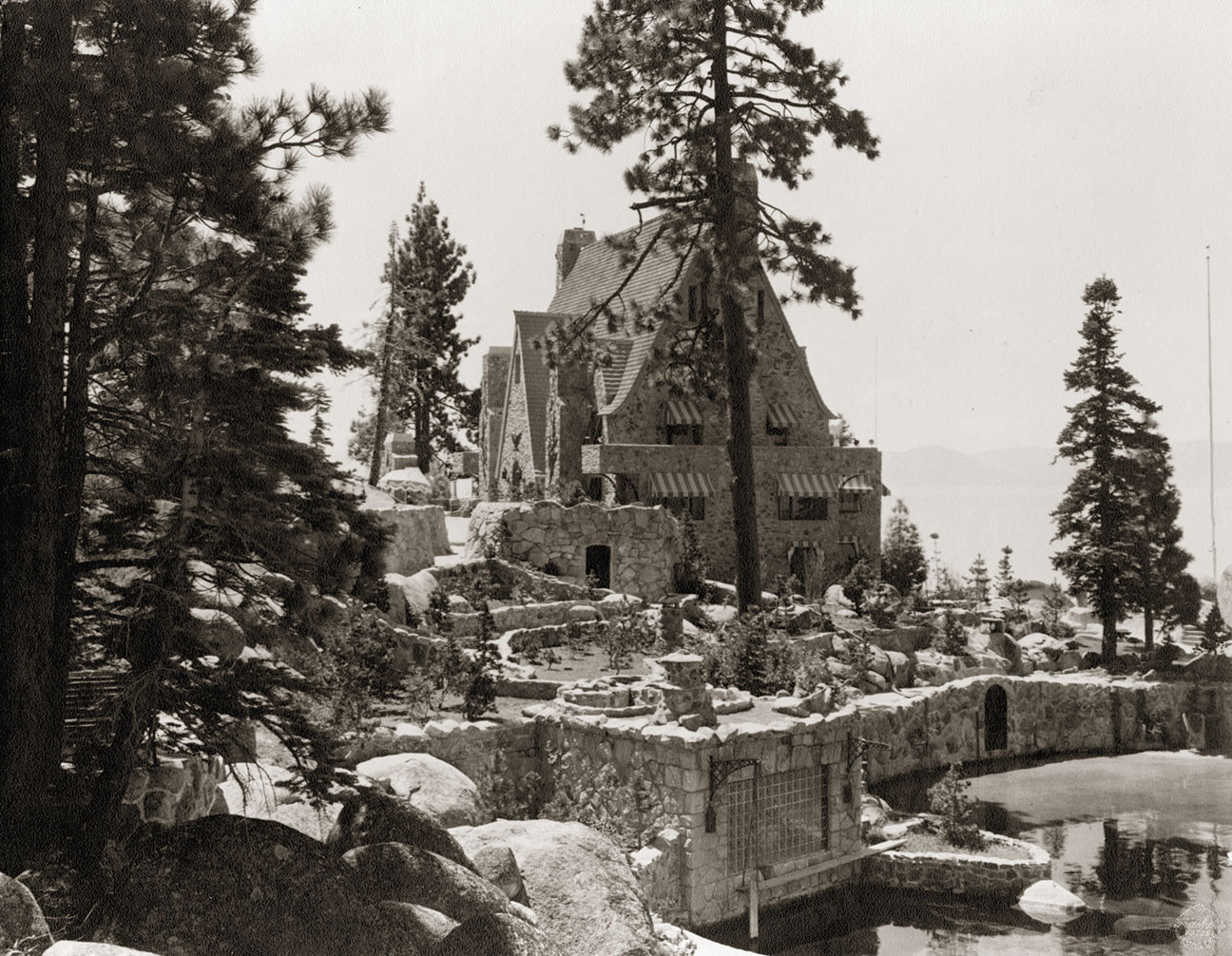
02 Jul A Tightrope of Preservation
How the Thunderbird Lodge Preservation Society balances legacy, education, cuisine and innovation at Lake Tahoe
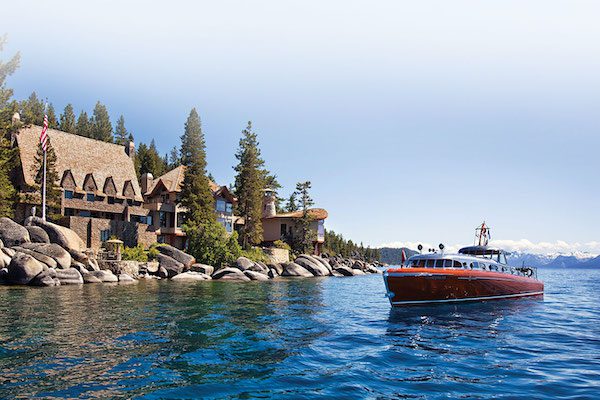
The iconic Thunderbird yacht and Thunderbird Lodge are synonymous with Lake Tahoe, photo by Eric Jarvis
Perched above the turquoise expanse of Lake Tahoe’s East Shore is a place where history whispers from every granite stone and wooden beam.
The Thunderbird Lodge National Historic Site, once the secluded estate of eccentric millionaire George Whittell Jr., has transformed from private playground to public treasure thanks to the unwavering stewardship of the Thunderbird Lodge Preservation Society.
But this transformation was anything but guaranteed—and even today, the preservation of this singular estate and its accompanying Thunderbird yacht represents one of the most delicate financial balancing acts in the world of cultural heritage.
Brush With Oblivion
By the early 2000s, the future of Thunderbird Lodge was in serious doubt. As a pawn in a complex decade-long public land swap involving private business, government agencies, a university and multiple nonprofits, the estate had deteriorated significantly. It was underappreciated, underfunded and—unthinkably—being considered for demolition.
“People assume that once something is historic, it’s automatically safe,” says Tony Addario, who has served on the Thunderbird Lodge Preservation Society’s board of directors since 2007. “But we came within a few boardroom votes and a bulldozer of losing Thunderbird Lodge forever.”
It was then that a small but determined group of preservationists and local stakeholders stepped forward, reconstituting the Thunderbird Lodge Preservation Society after the University of Nevada, Reno stepped away in 2003. The mission of the nonprofit organization was clear: protect and interpret the estate and the broader historical fabric of Lake Tahoe for public benefit. Over two decades later, that grassroots initiative has become a national model of community-driven heritage stewardship.
Despite its historic grandeur and environmental importance, Thunderbird Lodge is not state-owned, federally operated or managed by a university—as many mistakenly believe.
The lodge sits on a land reservation deeded by the U.S. Forest Service, but the Thunderbird Lodge Preservation Society receives no government operating support. While the University of Nevada, Reno played a role in the society’s early formation, the current operation is entirely sustained by program revenue from public tours and fundraising events, as well as charitable support from local families and businesses.
“This is a public trust in the truest sense,” says Michael Fischer, chairman of the society’s board of directors and former director of the Nevada State Department of Cultural Affairs. “Every tour ticket, every gala donation, every charitable gift—those are what keep the lights on, the boat floating and the story of Lake Tahoe alive.”
A Lodge, a Yacht and a Trove of Tahoe Treasures
The crown jewels of the estate are the lodge itself and the Thunderbird yacht—a 55-foot, V-12-powered mahogany marvel originally commissioned by Whittell in 1939 and later modified by casino mogul Bill Harrah. Yet Thunderbird’s mission extends far beyond one estate or one boat.
The Thunderbird Lodge Preservation Society stewards thousands of artifacts and ephemera that reflect the full spectrum of Lake Tahoe’s history—from its Native American roots to its twentieth-century boom as a mining, logging and gaming destination, to its present as a battleground for environmental sustainability.
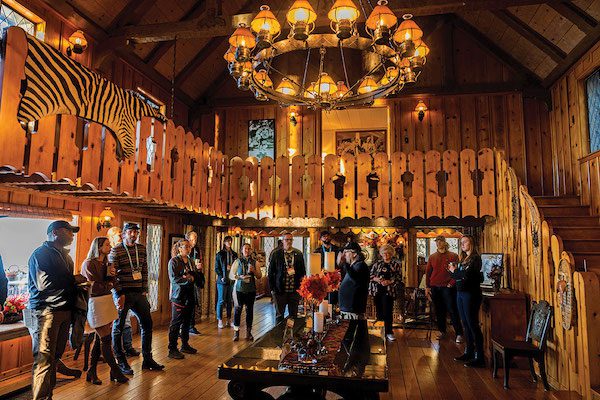
The Outdoor Media Summit is one of many domestic and international events held each year at Thunderbird Lodge, photo courtesy Thunderbird Lake Tahoe Archives
This vast and nuanced story is told through carefully curated exhibits, guided tours and an ambitious digitization project designed to make the Thunderbird collection accessible to scholars and the general public worldwide. Thus, an 18,000-square-foot museum and archive is under development in Incline Village.
Between 5,000 and 8,000 people visit Thunderbird Lodge each year, wandering through the stone tunnels, the Card House and the infamous Elephant Barn (built to house Whittell’s pet elephant, Mingo). But as breathtaking as those experiences are, they don’t pay the bills.
“To truly cover our annual operating expenses—which include everything from sewer services to insurance to fuel for the Thunderbird—we’d need tens or hundreds of thousands of visitors per year,” says Fischer. “And that’s just not possible without destroying the very essence of what makes Thunderbird Lodge special.”
Instead, the society has crafted a high-touch, low-density business model. Public tours operated from the Incline Village Welcome Center in partnership with Travel North Tahoe Nevada remain affordable for the average family, while premium,
limited-access experiences are offered to those willing to invest in the mission.
It’s a tightrope walk—offering enough public access to fulfill the educational mission while ensuring that elite membership and event revenues fill the funding gap.
Mission vs. Margin
In a perfect world, Thunderbird Lodge would host nothing but public educational programs, school field trips and historical symposia. In reality, keeping the lodge and yacht afloat occasionally requires stepping outside the mission.
“Weddings and corporate events are not ideal,” one staff member admits. “But they pay for things donors don’t think about—like the electric bill or spare parts for the historic site’s multi-million-dollar water treatment facility.”
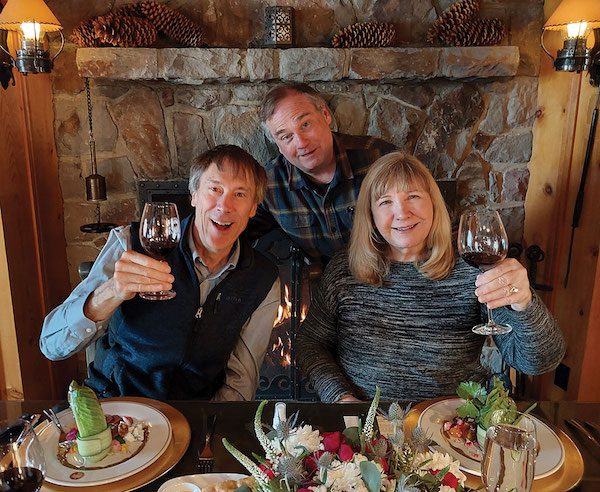
Thunderbird donors like Steve and Cheryl Hale also volunteer their time to help maintain the historic site. Here, they share a laugh with curator Bill Watson at a Friendraising Dinner, photo courtesy Thunderbird Lake Tahoe Archives
Even when the community rallies to support special projects—like a new roof or restoring the yacht—those one-time infusions can’t sustain ongoing costs of nearly $2 million per year absent major repairs. That’s why the Thunderbird Lodge Preservation Society is aggressively working to build a permanent Preservation Fund. It was once thought that $10 million would be sufficient, but the society’s board now realizes it needs nearly $30 million to allow the organization to weather economic storms, tackle deferred maintenance and keep Thunderbird Lodge open for generations to come.
The beating heart of Thunderbird’s financial model is the Flagship Membership Program. For an annual charitable gift of $10,000 or more, members gain year-round access to the estate and a calendar of educational and culinary events found nowhere else in the region.
Every summer, these members and their guests gather for Thunder Thursdays, an exclusive evening program that fuses history with haute cuisine. Each week features a different theme—from the time Whittell hosted circus animals on his property to the lesser-known environmental impacts of his French wife Elia’s culinary tastes. One unforgettable evening explored how Elia’s fondness for French frog legs led Whittell to import a non-native species—frogs that now populate Lake Tahoe’s wetlands as an invasive presence.
The society partners with local chefs and historians to create a sensory experience that brings the past to life, using food and storytelling as tools for connection and education.
“It’s about more than just a fancy dinner,” says Addario. “It’s about building a relationship between people and place, one course at a time.”
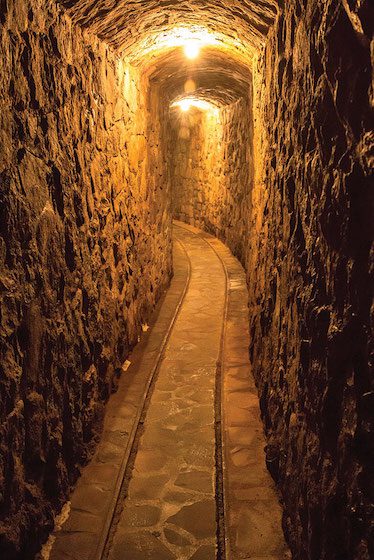
Lending to its mystique and intrigue, Thunderbird Lodge beneath the surface is honeycombed with tunnels, service corridors and utility areas, photo courtesy Thunderbird Lake Tahoe Archives
Call to Action
In an era of shrinking federal support for the arts, heritage and conservation, places like Thunderbird Lodge are increasingly dependent on grassroots fundraising and community involvement. The myth that historic sites are somehow protected by default is a dangerous one—especially for complex, privately operated institutions like Thunderbird.
The truth is, without its community of supporters, Thunderbird would not exist today. Nearly 100 volunteers maintain Thunderbird Lodge and yacht year-round: gardeners, tour guides, yacht crew, archivists, administrative staff, and buildings and groundskeepers.
And the future still hangs in the balance.
If Lake Tahoe’s story—its cultural layers, natural wonders and unforgettable characters—is to be preserved, it will take continued investment, not just in dollars, but in shared responsibility, including volunteerism. From small donations and tour visits to flagship memberships and legacy gifts, every gesture matters.
Because what was nearly lost once can be lost again. And what endures, endures only because people care enough to make it so.
Thunderbird Lodge is open for public tours from May through October. Thunderbird Lodge Preservation Society is a Nevada nonprofit corporation with IRS 501(c)(3) tax-exempt status as a public charity. For information about tours or making a contribution, visit thunderbirdtahoe.org.
Bill Watson is the curator of Thunderbird Lake Tahoe.



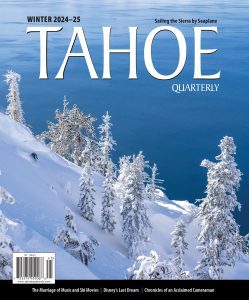
No Comments